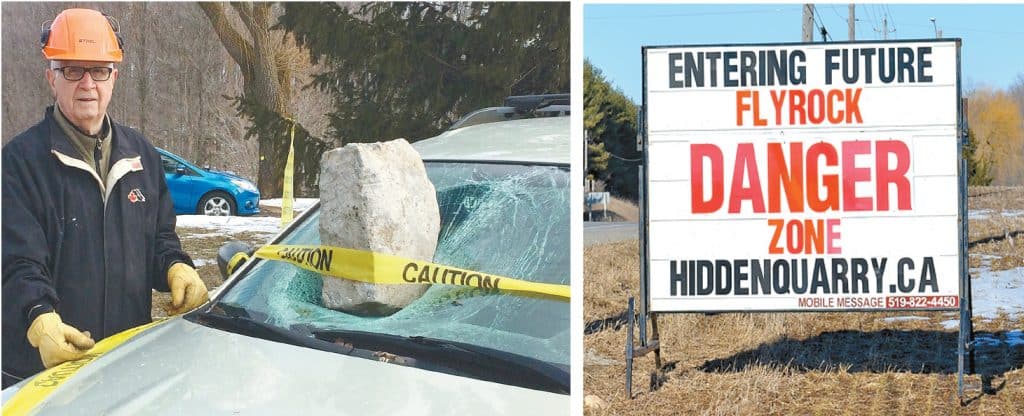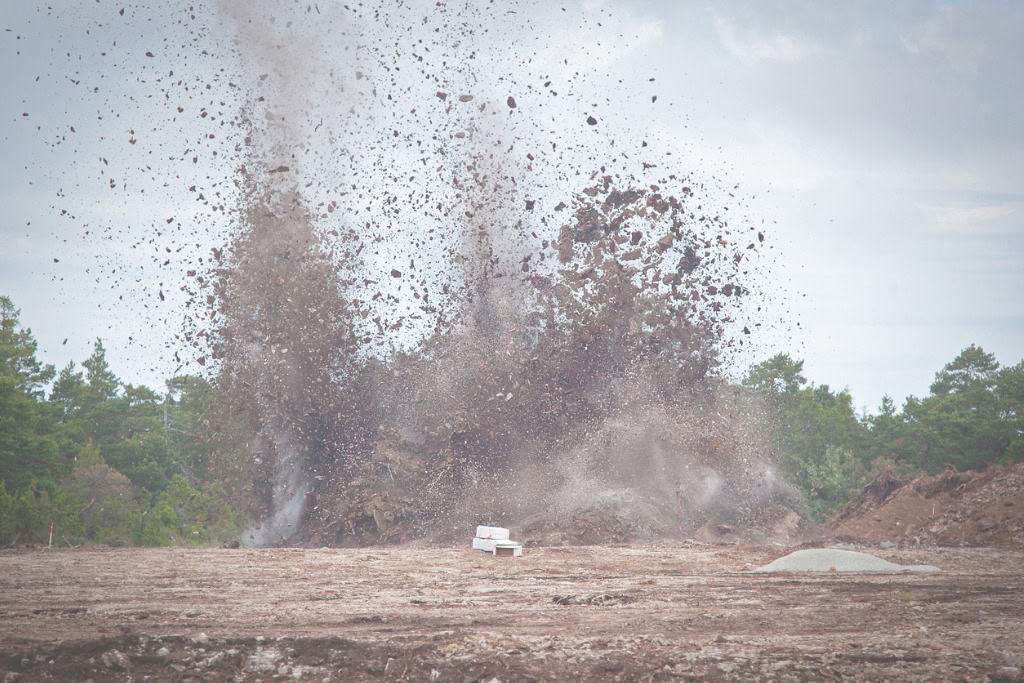Blasting, an essential process in various industries, holds both promise and peril. Among its hazards lies a particularly menacing threat: flyrocks.
First, what are flyrocks?
Flyrock consist of rock fragments that are ejected from the blast site, extending beyond the designated clearance zone, posing risks to personnel, equipment, and nearby structures. This safety zone mandates the area that all personnel and equipment must be evacuated before the blasting.
Flyrock occurs when a blast’s explosive force surpasses the rock mass’s containment capacity. Factors like poor blast design, improper loading, or unfavorable geological conditions can trigger this.
There are some mechanisms that may help you predict and establish the maximum fly rock throw during a blast (Moore and Richards, 2005):
- Face burst: Face bursting occurs mainly to reasons such as insufficient burden, overcharging in the zones of weakness or the regions with major geological structures.

- Cratering: When the stemming height to the hole diameter ratio is to small or the collar from the rock is weak, it can be projected in any direction.

- Rifling (Stemming Ejection): When the stemming heigh is insufficient or it’s composed from inappropriate material, rifling – the ejection of this stemming material can be produced.

Where:
- θ = Drilhole angle
- L = Maximum throw (m)
- M = Charge mass/m (kg/m)
- B = Burden (m)
- JH = Stemming height (m)
- g = Gravitational constant
| ROCK TYPE | TYPICAL VALUES FOR K |
| Soft Rock | 13.5 |
| Medium Rock | 20.3 |
| Hard Rock | 27.0 |
WHAT ARE THE DANGERS OD FLYROCK?
There are many dangers that involves flyrocks. Some are life threatening to the work force and other threating to the life of the quarry or mine!
- Injury or Fatality: Flyrock presents a direct threat to workers, bystanders, and nearby structures, potentially causing severe injury or even death upon impact.
- Property Damage: Nearby structures, vehicles, and equipment are at risk of damage from flyrock, necessitating costly repairs or replacements.

- Environmental Damage: Flyrock disturbances can disrupt the surrounding environment, affecting vegetation, wildlife habitats, and water bodies, potentially leading to ecological harm and contamination.
- Legal and Regulatory Consequences: Flyrock accidents can result in legal liabilities, fines, and regulatory penalties for the responsible parties, violating safety regulations and environmental laws. https://www.msha.gov/news-media/announcements/2016/03/24/flyrock-dangers-best-practices
- Public Perception: Flyrock incidents can tarnish the reputation of involved companies, undermining public trust in blasting safety and resulting in negative publicity and potential business losses.
Stay tuned for part 2, where will tackle how can we reduce and some best practices to avoid #flyrocks !







